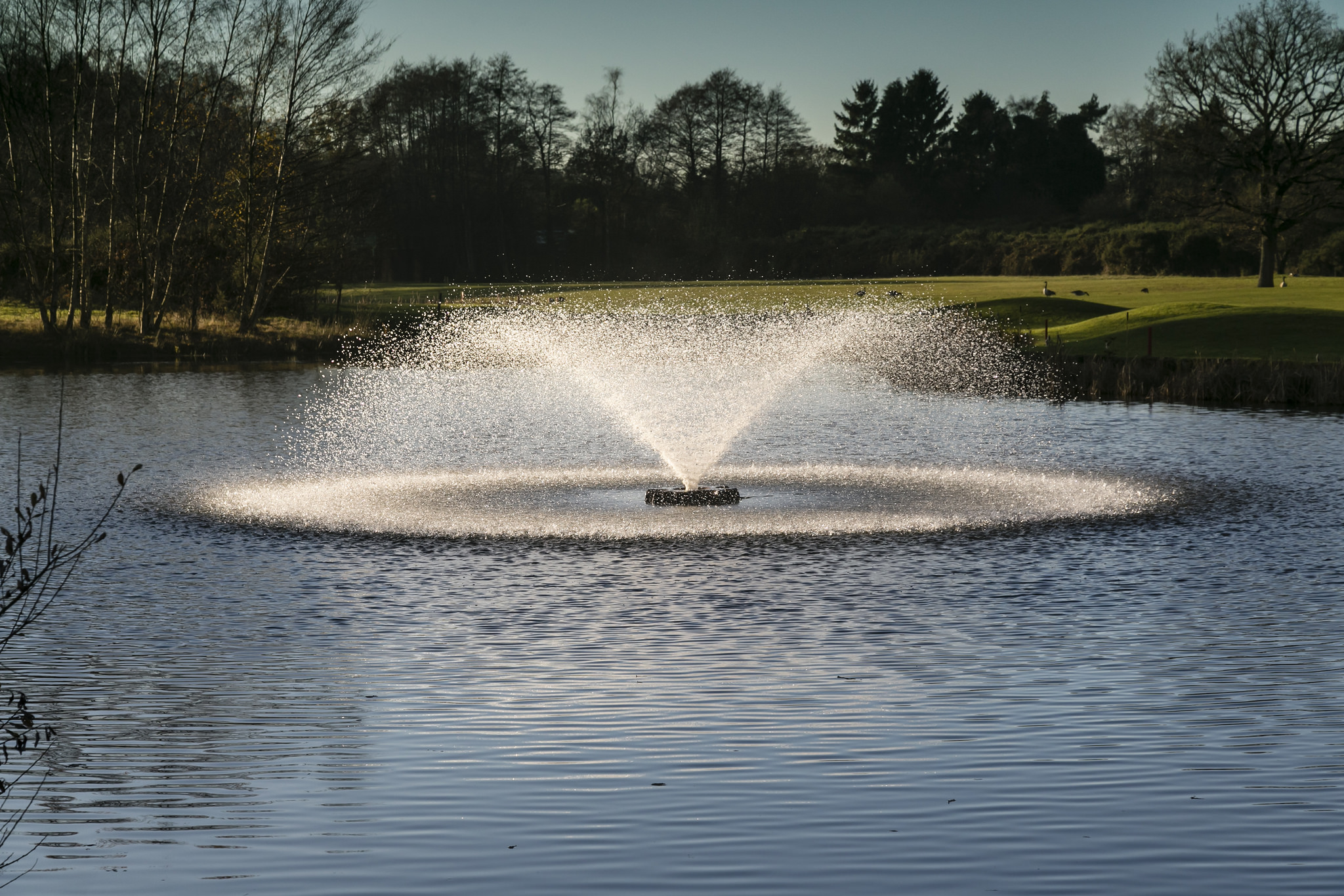- CONTACT US
- MOWERS
- VEHICLES
- APPLICATION
- Golf
- AERATORS
- VEHICLES
Reassurance from Maintenance
CONTENTS
FEATURED STORIES

David Jackman
Reading time: 10 minutes
Inside Maintenance and Spending
One of the key areas to consider when you're looking at an equipment's expected 'life cycle', are the operating costs including maintenance and machinery downtime.
Your machinery fleet is an extended part of the team and to get the most out of the investment, it is important to have a good preventive maintenance programme to protect one of your biggest assets.
Maintenance and all that it entails
Equipment is one of the largest investments a golf course makes. But that equipment only delivers a return when it’s working properly. That’s why preventive maintenance is essential to get the most out of your machines.
It is inevitable machinery will breakdown at some point and you simply have to deal with it. But it’s not just repairing broken machinery and minimising the downtime when a problem occurs, maintenance also safeguards your investment, ensures a better performance for longer and ensures a higher residual value.
Many clubs will have benefit from a workshop and part- or full-time mechanic, but many more don’t have that. And in those cases, there will be a machinery maintenance programme to take away the workload, stress and burden.
An effective preventive maintenance programme includes equipment inspections, scheduled servicing and replacement of parts as needed. For turf equipment, service intervals are typically based on hours of operation. A robust regime will reduce and/or prevent unnecessary, costly and unexpected breakdowns – it is surprising for example how the areas of maintenance that generate service time or bills are relatively easily avoided, such as lack of greasing, contaminated fuel or oil and blocked radiators or oil coolers.
A proactive cleaning and greasing regime will protect the residual value of the investment and reduce overall service costs while prompt operator action to indicators such as noise, smell and vibration changes can save money through early intervention. Clean air and oil are the fundamentals to long engine life and reliability, in a similar way to cleanliness, good quality oil and controlled operating temperatures are key to hydraulic system reliability.
We’ll discuss the components of a successful preventive maintenance programme in more detail in a moment, but first, it’s worth exploring why it makes sense to have a programme in place.
Why preventive maintenance is important
- Safety – equipment and vehicles must be safe to operate. If worn components go unrepaired, it increases the risk of downtime or even worse, accidents.
- Availability and productivity – the team depends on equipment being ready to use when they need it. Preventive maintenance helps you maximise machine availability.
- Longer machine life – performing regular scheduled maintenance helps extend the working life of your equipment, which helps stretch your investment further.
- Cost savings – preventive maintenance is proactive. It helps minimise breakdowns that require more costly unscheduled repairs.
- Effective budgeting and cost control. Look for a plan that has a fixed cost for the period of the contract and there is the choice of monthly or quarterly payments.
- Peace of mind. Reassurance comes from knowing you can be assured your machines will perform to the best of their ability and support comes quickly when needed.
Components of an effective programme
Doing scheduled maintenance and adjustments will prolong the life of your equipment, help prevent expensive downtime and give the best possible performance.
- Regular, thorough servicing. Experience has shown that a high percentage of problems that occur in turf equipment have developed over a period of time and could have been prevented by adjustment, lubrication, or other required maintenance.
- Highly trained technicians. Today’s equipment is becoming more and more sophisticated with electric, hybrid and computer technology. If you don’t have a warehouse and full-time mechanic, then consider outsourcing your service programme to ensure your machinery benefits from servicing by people with the necessary skills and commitment to stay current with trends and ongoing training.
- Limiting downtime. There’s nothing more frustrating than a machine out of action. Downtime costs money and time is money. Downtime is basically a record of the cost of lost operator hours, lost income (if applicable) and replacement equipment hire costs. When recorded accurately it helps to support an ‘instinct’ that equipment is unreliable and ‘costing’ money. It can also support a considered decision to change equipment before its planned time. There is a direct correlation with maintenance practices reducing and, in some cases, preventing downtime. An aging or poorly maintained equipment fleet is likely to generate unwelcome repair costs and spiralling downtime creating additional difficulty in controlling maintenance budgets.
What does a maintenance plan specifically cover?
There’s a range of maintenance plans on the market to suit the needs of every customer, flexibility and choice are key with plans being able to be set for a base line of servicing based on tighter budgets, to a full care plan where it is easier to list ‘what isn’t covered’. These gold standard plans when linked to a new equipment investment can provide years of fixed price maintenance and budget certainty – the financial surprises are removed. As well robust and preventative maintenance these plans focus on aspects that also affect the quality of cut and presentation of the surface, the significant reason for regular maintenance and adjustments. Important aspects include:
Sharpening rotary blades
A dull blade will produce a ragged cut and will require an excessive amount of engine horsepower to rotate the blade through the grass. More horsepower demand also means more fuel consumption. The most common causes for rotary mowers not giving a good quality of cut are due to dull cutting edges and/or bent blades.
Cylinder mower quality of cut
Remember that the ‘effective’ or actual height of cut depends on cutting unit weight, cutting unit accessories and turf conditions. It is important that accessories fitted to cutting units are cared for regularly too. Also remember that the ‘effective height of cut’ will be different than the bench set height of cut. In some turf conditions mis-selection can contribute to bottom blade and cylinder wear if too low.
Factors That Affect Quality of Cut
There are many! Tyre pressure, engine governed speed, cylinder bearing condition/adjustment, cylinder and bedknife sharpness, bedknife parallel to cylinder, bedknife to cylinder contact, bedknife attitude (angle), roller(s) parallel to cylinder, height of cut, correct bedknife, cutting unit alignment and ground following, roller and roller bearing condition, cylinder speed, traction speed, cutting unit drop speed and sequence, cutting unit counterbalance or down pressure setting.
When to sharpen cylinder mowers
When the grass is not cut cleanly and there are streaks and stragglers, the cutting unit is noisy or your schedule says it's time to sharpen! One sure way to determine the answer to this is by actually checking the cutting edges of the reel and bed knife to see if they are dull, nicked, bent or being run without "light contact" against one another.
Cylinder mower height of cut adjustment
Cylinder mower performance depends on proper set-up and adjustment procedures. An error of .010 inch (.25mm), in height end-to-end, or from one cutting unit to another, is visible as a mismatch on many golf course greens. Although there are design variations in cutting units, most require the same basic procedures. A surface plate, accurate height of cut tools and proper instruction are essential for setting up a cutting unit.
Maintaining cylinder mower performance
To accurately maintain height of cut and performance, routinely check the following components: cylinder bearing for looseness, end play and roughness. Replace if necessary. If adjustable (e.g. tapered roller bearings), adjust to ‘no’ lash while maintaining free rotation of the cylinder.
What does a maintenance plan cost?
It’s probably more relevant to say what value does each plan bring. What value will it bring to you and the team and the longevity and performance of the equipment?
There are so many plans with varying costs attached, but the main cost benefit is the control. Whichever plan you go for, certainly with Reesink Turfcare anyway, those costs don’t fluctuate throughout the year. What you sign up for is what you pay every month, no matter what happens with the economy, there will be no fluctuation. Even if machines need a lot of work, you know there’ll be no surprises.
Once you’ve decided a maintenance plan will bring value to your club, my advice is to set your budget, then look for a plan that falls within that. Can you afford the most comprehensive one? Make cost comparisons – what does each plan bring vs the estimated cost if you did it within the team.
Which plan you choose will also depend upon whether you’re choosing the plan at the point of purchase on a new fleet or for an existing older fleet. Some plans give you machinery warranty too, a highly valuable asset. Plus, how well regarded is the company – is the backup and support network extensive and esteemed and the spare parts supply process reliable and fast?
Reesink Turfcare has developed three new easy-care maintenance plans rated Gold, Silver and Bronze for machinery maintenance and servicing for its Toro customers. To find out more about these plans you can call 01480 226800 or email info@reesinkturfcare.co.uk
October 2020
Reesink UK LTD | 1-3 Station Road, St Neots PE19 1QF | Registered in England
Reesink UK LTD is authorised and regulated by the Financial Conduct Authority.







































































